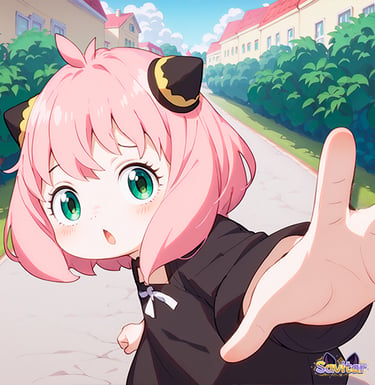🔥Access +100 Characters NSFW Hardcore for just $9.99 Monthly 😈
Lolicon: Censorship and Creative Freedom
The debate around lolicon often centers on one key question: Should it be restricted or even outright banned? While some view lolicon as a controversial genre that crosses moral boundaries, others argue that any restriction would be a violation of creative freedom. In this article, we’ll explore bot
LOLI
Savitar
9/5/20243 min read


The debate around lolicon often centers on one key question: Should it be restricted or even outright banned? While some view lolicon as a controversial genre that crosses moral boundaries, others argue that any restriction would be a violation of creative freedom. In this article, we’ll explore both sides of this debate and consider whether lolicon deserves the same protections as other forms of art.
What Is Censorship, and Where Do We Draw the Line?
Censorship refers to the suppression or regulation of content that is deemed inappropriate, offensive, or harmful. In the case of lolicon, many advocates of censorship argue that its depictions of youthful characters are morally wrong and should not be allowed in any form. But the question arises: Where do we draw the line between protecting societal values and stifling creative expression?
Lolicon exists in a gray area where artistic representation clashes with personal and cultural ethics. On one side, there are those who believe that no form of expression should be restricted as long as it does not cause real-world harm. On the other, there are those who argue that certain types of art are too controversial or offensive to be allowed, even if no laws are technically broken.
The Role of Art in Society
Art has always pushed boundaries. From provocative sculptures to controversial paintings, artists have used their work to question societal norms, challenge authority, and express ideas that make people uncomfortable. Lolicon fits into this tradition as a niche form of anime and manga that, while fictional, touches on themes some find inappropriate. However, it’s important to recognize that art, by its nature, often sparks discomfort or debate.
The question is whether society should allow art to challenge moral boundaries, or if there should be limits to what can be expressed. For those who believe in total creative freedom, restricting lolicon would set a dangerous precedent—one where any form of controversial art could be censored based on shifting moral standards.
Censorship and Cultural Differences
Censorship is not universal; it varies greatly depending on where you are in the world. In Japan, the home of lolicon, there are laws that regulate real-world content involving minors, but fictional depictions like those in lolicon are not treated with the same level of scrutiny. In contrast, many Western countries have stricter views on any media that might be interpreted as involving minors, even in fictional contexts. This disparity in laws and cultural perspectives further complicates the debate over whether lolicon should be censored.
It's worth considering whether content like lolicon, which exists purely in the realm of fiction, should be subject to the same moral judgments that we apply to real-world situations. Can fictional content really cause harm, or is this just another example of cultural misunderstanding?
The Slippery Slope of Restriction
One argument against the censorship of lolicon is the idea of a slippery slope. If we begin to restrict fictional content because it offends or discomforts some people, where does it end? Could other genres, such as horror, fantasy, or even political satire, face similar bans because they challenge societal norms?
Censoring one form of expression often opens the door to further restrictions. Today, it might be lolicon; tomorrow, it could be any art that challenges accepted ideas. For advocates of free speech and creative freedom, this is a key concern. Once restrictions are in place, it becomes easier for governments or corporations to regulate other forms of expression, ultimately narrowing the space for artists to explore controversial or provocative themes.
Ethics vs. Legality
Another important distinction in the debate is the difference between what is ethical and what is legal. Many people who argue for the censorship of lolicon do so on moral grounds, believing it to be ethically wrong. However, ethics and legality don’t always align. Just because something makes people uncomfortable doesn’t mean it should be illegal.
In most cases, lolicon does not involve any real-world harm, which raises the question of whether it is right to impose restrictions based solely on ethical concerns. Should the law regulate what we find morally objectionable, or should individuals be free to engage with fictional content as they see fit, as long as no real harm is done?
Conclusion: Balancing Freedom and Responsibility
The debate over whether lolicon should be censored comes down to a fundamental conflict between creative freedom and societal responsibility. On one hand, art should be a space where creators can explore even the most controversial themes without fear of censorship. On the other hand, societies have a responsibility to protect vulnerable populations and maintain moral standards.
Ultimately, the question of whether lolicon should be restricted may never have a clear answer. It depends on one’s perspective on art, morality, and the role of censorship in society. But as long as the debate continues, it is crucial to approach the subject with nuance, recognizing the importance of both creative freedom and ethical consideration.


